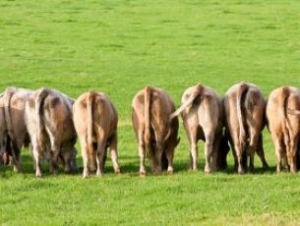Dairy in the World
Dairy Stocking Rate Research Challenges Pollution Perceptions

In dairy farming, particularly on pasture-based dairies, leaching of nitrate-N (NO3-N) to groundwater is a primary concern, leading to certain countries placing limits on herd size on a fixed land area (i.e., stocking rate) to avoid loss of nutrients to groundwater.
It has been commonly accepted that more cows per pasture would lead to increased leaching because of increased nitrogen excretion via urine; but, a new study discovered circumstances where a decline in leaching occurred with increased stocking rate, challenging assumptions about how best to reduce the environmental footprint of grazing systems.
The experiment was conducted in New Zealand over two years, with cows divided over ten farmlets with increasing stocking rates per hectare.
Over the course of the study, total nitrogen consumed and total nitrogen output in milk and meat from the farm increased for every 1 cow per hectare increase in stocking rate. Faecal and urinary nitrogen excreted per hectare also increased.
But, nitrogen intake and milk, faecal, and urine nitrogen output per cow declined with increasing stocking rate. This is particularly important during the autumn months, where urinary N has been implicated in N leaching. Leaching also declined with increasing stocking rate, coinciding with a decline in the concentration of NO3-N in leachate.
The negative association between stocking rate and leaching was possibly due to a reduction in nitrogen intake per cow leading to less urine nitrogen output per cow, a greater spread of urinary nitrogen across the pasture with larger stocking rates, or an increase in pasture nitrogen harvest and an associated increase in milk and meat nitrogen exported and, as a result, less nitrogen available for leaching.
"Globally, dairy systems are being scrutinised for their environmental impact and many are calling for a reduction in cow numbers. What this new research shows is that grazing more cows per acre of pasture and the associated management strategies that go with this actually reduces any negative impact of grass-based dairies on water quality, provided no additional feed is imported," said Journal of Dairy Science editor-in-chief Matt Lucy.
TheCattleSite News Desk





















